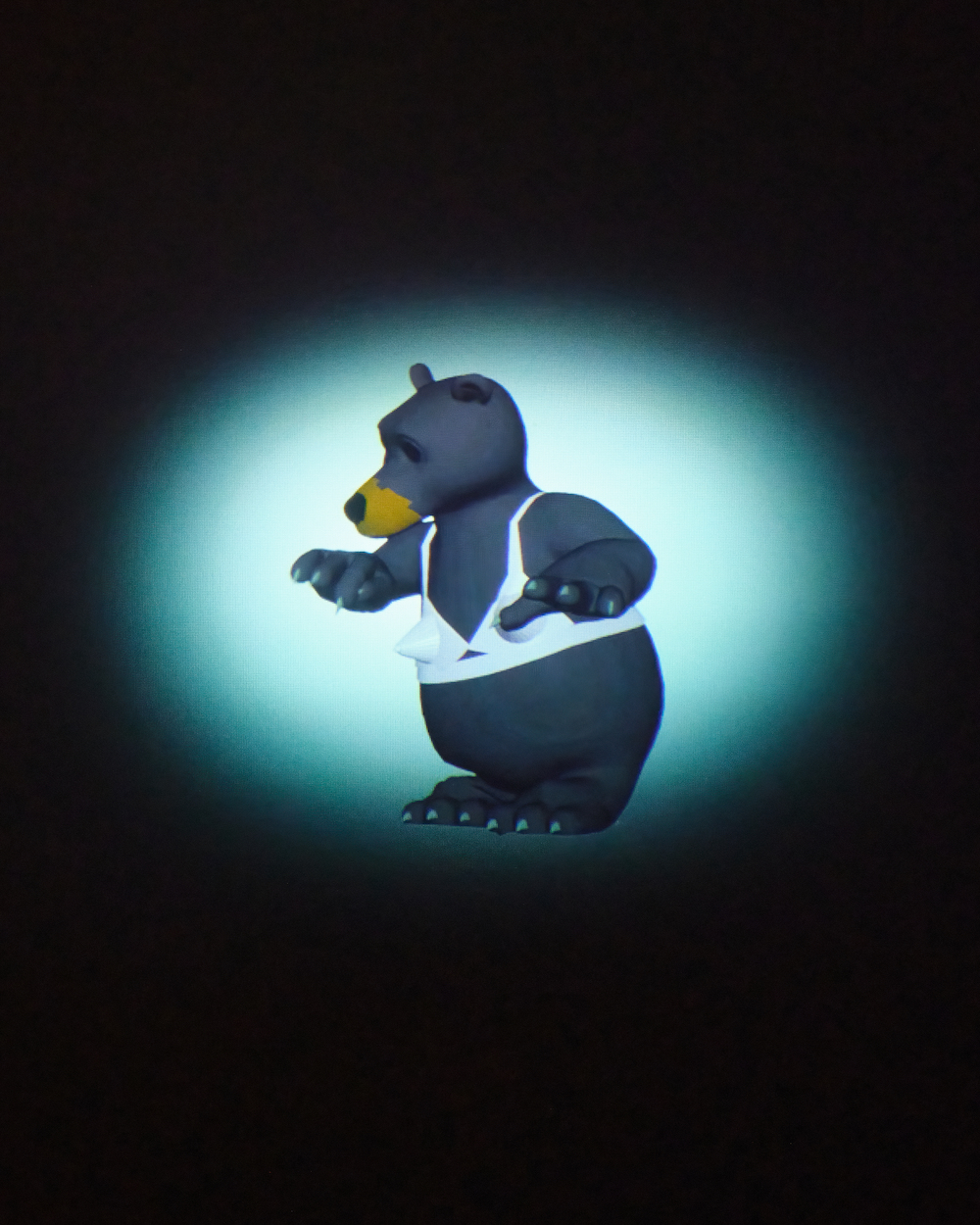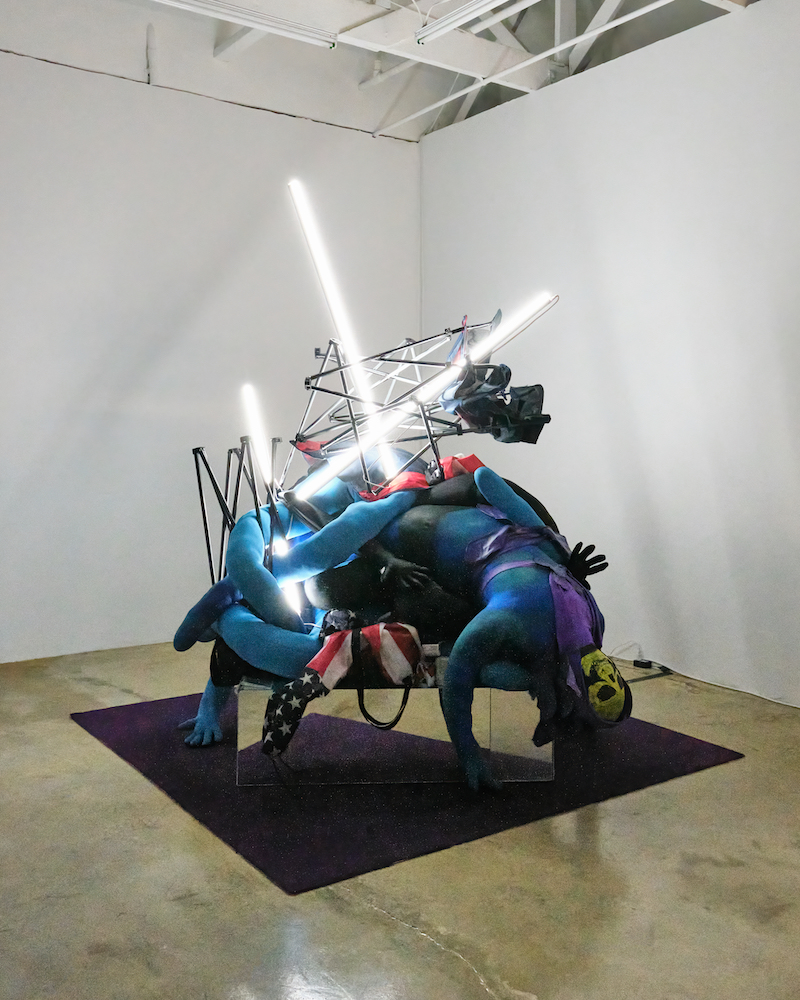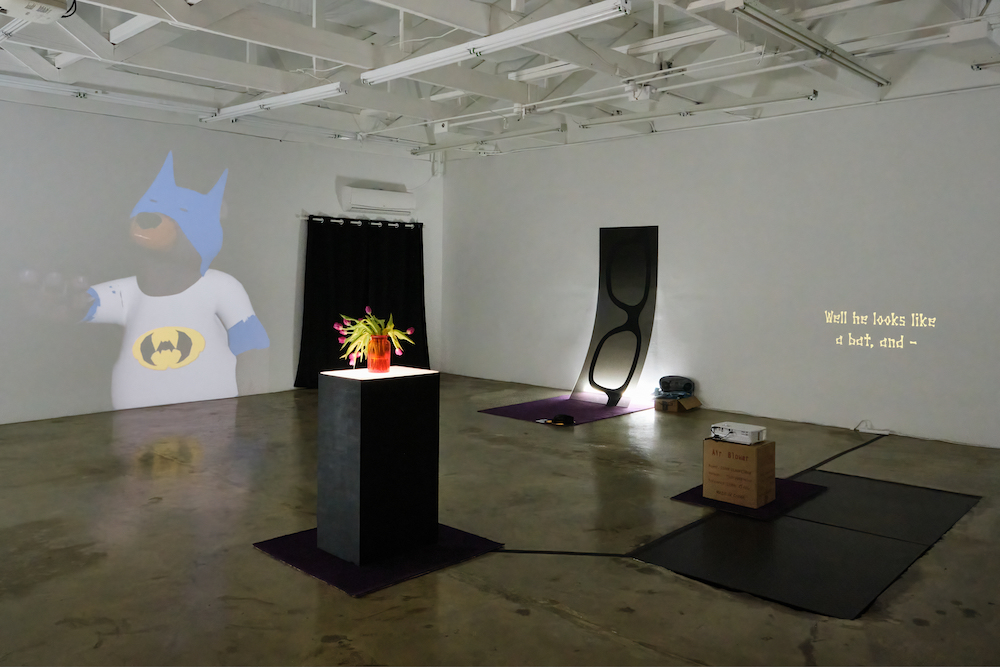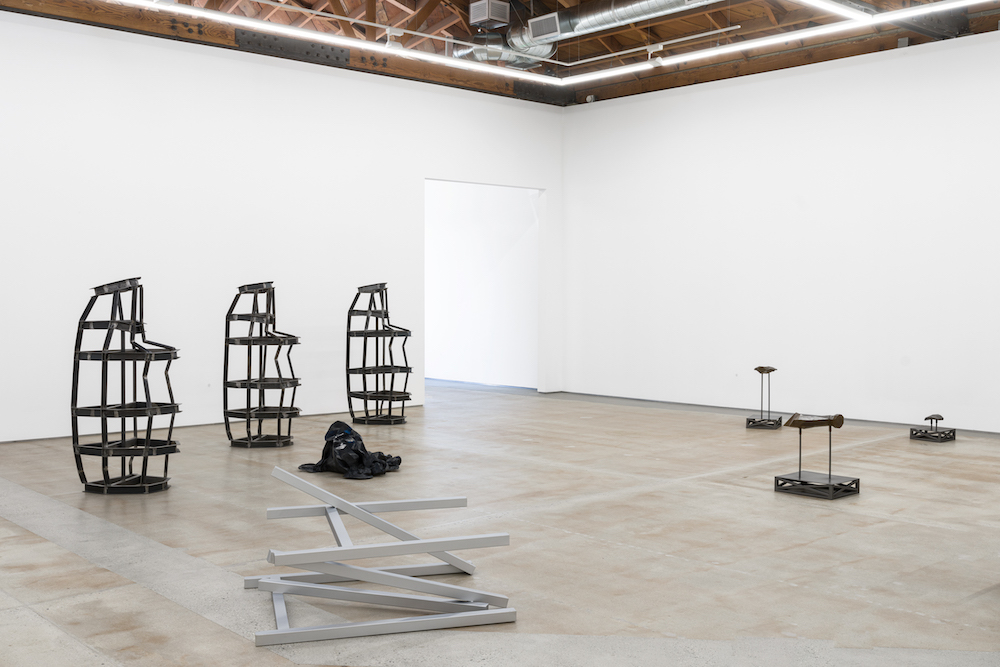Your cart is currently empty!
Tag: Diva Corp
-

Olivia Mole
at GattopardoThe shower scene in Psycho. You know it, everyone’s seen it. Go to the end. We follow a trail of blood and water through the tub, then push in as it swirls down the drain. In this moment, always, I beg Hitchcock to follow the zoom, to continue completely down the drain… to enter the void entirely! Instead, the shot dissolves to another of a lifeless eye, and we telescope back out. We never enter the drain.
This is the feeling that overwhelms Olivia Mole’s “Nocturne,” one of almost reaching exactly what it is that you’re after, only to have it soften into something else entirely. If you’ve felt this feeling before, it was likely in a dream, or possibly as a word slipped from the tip of your tongue, though it may have also been in a moment of love. Fine art rarely captures this feeling—at least not what we’ve been seeing lately. Even at its most oblique, today’s gallery-bound art tends toward the definitive, the unencumbered, the essentialized. Nocturne does not, and that is good.
Technically, the show is one work, Dopesheet Batman Ep VI, made up of seven “islands” of material, each grounded on a patch of industrial-grade, purple carpet. At times, objects are in motion—two inflatable projection screens tangle as they bloat alongside each other, filling with air; an oscillating fan periodically blows an opaque acrylic sheet over the mirror behind it; a mound of stuffed figures and camping chairs rotates on a turntable. There is noise and music and light, and three projections run at varying intervals—two lo-fi animations of the Charmin Bear and one text-based video with a corresponding spoken-word audio track. At the center of it all, practically hidden by the ostentation, sits a quiet bouquet of wilting tulips. The entire show cycles through every twenty minutes.

Olivia Mole, “Nocturne,” 2024, installation view. Photo: Chris Hanke. Courtesy of the artist. It’s all catch-as-catch-can, especially when it’s all moving. So much information, so much material. So much syncopation, too. A series of startling and then’s. You’re watching the silent video of Batman bear, and then the shrill spoken-word piece rings out, and then you catch your distorted reflection in mirrored acrylic, and then the moon bounce-like projection screens start to inflate, and then that fan turns on again, and then you finally make it over to read whatever it is that Mole has left Xeroxed on that table —evidence, perhaps?—and then the whole funhouse powers down altogether. Lights go off, things deflate, silence.
…yet, still, those tulips wilt. It’s the only part of the show that doesn’t stop, a punch unpulled. If we’re talking Psycho shower, the tulips—should we notice them—release us to the drain completely.
Considering the cyclical pomp and wreckage, one could easily interpret the show on purely systemic terms. A poetic indictment of the machine of so-called progress. Mole makes sure we don’t miss it, though. Her exhibition text consists of a single quote, uncredited, from the 19th century philosopher G.W.F. Hegel (“The owl of Minerva spreads its wings only with the falling of the dusk”), a sort of lamentation for man’s inability to understand history except in hindsight. Further, she summarizes her
materials list—which includes “Stars and Stripes Forever” by John Philip Sousa (the American military march composer, recorded in Independence, CA) and USA flag carry-bags—with the phrase, “A spell for the end of empire.” Seen through this lens, the show is one of many in recent memory that takes on the spectacle of late-stage capitalism in the United States, documenting the twilight of a system built for the system’s sake, rather than for the people in it.
Olivia Mole, “Nocturne,” 2024, installation view. Photo: Chris Hanke. Courtesy of the artist. The explicit reference to empire, though—while formally incidental—becomes somewhat limiting when it serves as the only given frame for the show. It preprograms an otherwise labyrinthine installation toward a singular, simplified read; it gives us the right answer. And that dampens what is otherwise one of the exhibit’s greatest strengths: the agential wrinkle. Nocturne’s design requires that we situate ourselves in the rubble, that we move and decide rather than merely observe. As intentionally distracting as the show might be, almost every piece reflects back an image of the viewer to themselves—sometimes obstructed or distorted, often fleeting—via mirrors, acrylic sheets, or glass. This is deliberate, no doubt: we, as individuals, are implicated in our collective fate, and it’s up to us to notice precisely when and how.
If nothing else, “Nocturne” is a site of play or, as the Diane di Prima scanned text on one table makes mention, “a kind of detour” that breaks away from a more linear understanding of the world. The show pushes us to associate and connect. We sharpen our ears to hear through the dissonance, we meander about on a hunch, we turn just in time to see the mirror before the lights go off. Mole creates a playground that perpetually rebuilds and deconstructs, through which we can observe ourselves and perhaps even our conceits. In a demanding, yet dynamic way, “Nocturne” reminds us to be alive in time, and to notice it.
-

Aria Dean
at Château ShattoIn her still-young career, Aria Dean has shown a remarkable knack for giving the institution exactly what it wants: shrewd work that stings the nerve of the moment without quite stabbing it. In activating the virtual as a conduit for Black radical thought, Dean’s interests dovetail nicely with the art establishment’s current (though fading) focus on political and identity orientation, as well as its recent (though tepid) embrace of post-internet work.
What Dean gives us in “Facts Worth Knowing,” however, is a significant departure. What she gives us is an artist on strike.
Up to this point, Dean’s output has been explicitly tied to Blackness, Afropessimism, and racial capitalism. Yet there’s no mention of any of that here, which is curious given the show’s association with Intolerance, D.W. Griffith’s 1916 epic. (Yes, that Griffith of Birth of a Nation notoriety, once the father of American cinema, now its maligned racist uncle). Instead, Dean, via the show texts, tells us to consider minimalism and form and the perception of sculpture in space and time (recalling Robert Morris’s 1966 “Notes On Sculpture”). These currents crested in importance in the Minimalist era with artists almost exclusively white and male, now old or dead.
Dean’s omission of Blackness from her own show—at least in its expected, explicit form—is the nexus on which things turn. In other words, Blackness is (drumroll) the elephant in the room, and Dean acknowledges this by fragmenting, warping, and melting an elephant out of a discontinuous montage of black steel and bronze. She models her elephant, or the sum of its parts, off of portions of Griffith’s monumental (and notoriously abandoned for years on an East Hollywood lot) Intolerance set, using blueprints from the set’s appearance in the 2011 video game L.A. Noire to help accurately render her forms. Notably, that video game takes place in 1947, almost thirty years after Griffith’s set was razed. To add it all up, then: We’ve got a deconstructed representation of an elephant, modeled off of a digital facsimile of a replica of a statue of an elephant, from a time in which it never existed in a place that doesn’t exist (or exists only virtually).
Remember, though: You’re here to think about material, the text says, and temporality, and space. So, you try. You think about steel which structures, bronze which historicizes, both of which are certain and fixed. You note that the titles of the first three pieces, the Duchampian Bottle Rack-esque sculptures near the entrance, all mention armature or infrastructure or both, and, naturally, you wonder what exactly they’re armatures and infrastructures for. They’re implied frames, supports for real, true sculpture—the everlasting—yet within the frame of the gallery they exist as real, true sculpture themselves, simply because they’re here. Thus, the negatives that affirm the absent positive become the positives themselves, and the distinction between object and subject begins to slip, as does the consensus on which that distinction is built. Dean echoes this in the formatting of her exhibition essay, printed with a conspicuous border around the text, leaving the title of the show outside that frame, yet within another, hinting that the facts worth knowing in “Facts Worth Knowing” exist both ex- and in-frame.
Primed to think about the impossibility of the frame, we can read this work as Dean denying the establishment the conveniently packaged, readable show it wants, while alluding loudly to its absence. There’s a chance “Facts” is still on some level cynically catering to museum boards, the institutional darling engineering a rebellious streak. Or maybe it’s more of a newfound artistic obstinacy, an inversion of, say, Mike Kelley’s sardonic embrace of the apparatus’s expectation. More likely, though, Dean just came to realize that the work was starting to produce her, and she wanted out. No matter, the institution will happily devour this show, just as capitalism devours its discontents only to respawn them as commodities. It’ll find a frame, as it always has done—a frame that will, once again, limit the work, as it has always done.
Dean’s project here—the larger one, the strike—is a gesture at unlimiting. By questioning the productive relations of the art world, and in trying to avoid becoming synonymous with herself, she reminds me more of Michael Krebber, the (white) German conceptual painter, than anyone else. Krebber’s current show at Greene Naftali comes accompanied by a text that argues in favor of artists who seek rather than find. The latter is more passive, at times intuitive, and certainly yields fine results, but the text stresses that seeking—through its almost unsexy manifest of the attempt, of the unfinal—opens us to ideas about “where [art] comes from and what it is after.” Measured this way, Dean’s show reads an expansion of the field of art for art’s sake, an insistence on the uncertain terms that make art art.



